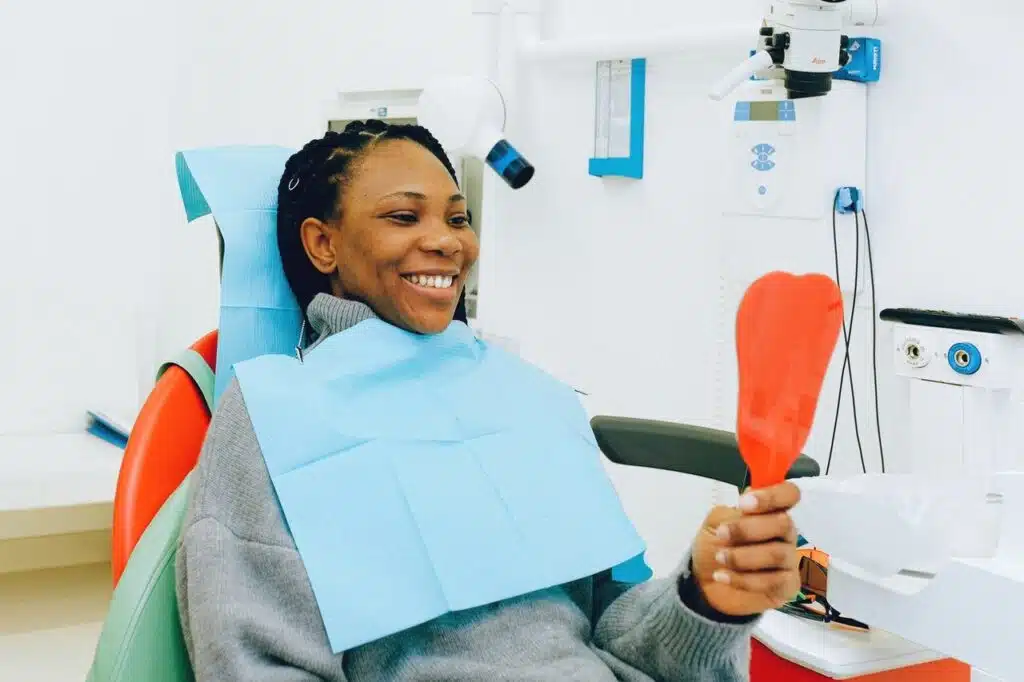The alignment of your lower and upper jaws plays a significant role in your appearance, dental health, and overall health. An underbite can have a negative impact on each of these if not corrected. Fortunately, several options exist to have properly aligned jaws and teeth for a healthy and beautiful smile. Learn more about how to fix an underbite, and book an appointment with Trident General Dentistry today.
What is an Underbite?
An underbite is a misalignment of your lower front teeth extending beyond your upper front teeth when you close your mouth. This misalignment can have such a pronounced effect that your teeth won’t come together at all. In this case, the cause is an abnormal protrusion of the lower jaw.
What Causes an Underbite?
There are several possible causes of an underbite, including:
· Genetics
· Thumb sucking
· Excessive thrusting of the tongue against the teeth
· Prolonged use of a pacifier or bottle
· Jaw injury
What Problems Can an Underbite Cause?
An underbite can affect you physically, mentally, and emotionally. The various complications include:
· Change in appearance
· Speech difficulties
· Jaw or mouth pain
· Headaches
· TMJ disorder
· Mouth breathing
· Sleep apnea
· Grinding your teeth
· Chewing difficulties
· Premature wearing down of your teeth
What Treatments Can Correct an Underbite?
Fortunately, most cases of underbite respond well to nonsurgical treatment during childhood or the early teenage years. Adult treatment often requires surgery to achieve the desired results. The severity of your underbite determines the necessary treatment to correct the condition. The various treatments to correct an underbite include:
· Traditional Braces
Traditional metal or clear braces are common treatments for many mild cases of an underbite. Braces provide an economical and effective treatment for underbites, especially during the teenage years. However, you may need the removal of some lower teeth if these are crowded. Treatment can take two to three years and usually requires wearing a retainer after removal of the braces.
· Invisalign Clear Aligners
Some underbites respond favorably to Invisalign clear aligners. Invisalign utilizes custom-made, clear aligners to align teeth into a more optimal position slowly. As a result, Invisalign aligners require fewer dental visits, allow you to eat your usual diet, and are easy to maintain and keep clean.
· Upper Jaw Expander
If your upper jaw is very narrow, you may need to wear a palatal expander device. The expander fits across the roof of your mouth, and you adjust it each night to gradually widen your palate. You typically wear a palatal expander for about one year, followed by a retainer to promote the needed bone growth to achieve the best results.
· Reverse-Pull Headgear
This is a face mask that wraps around your head and pulls the upper jaw forward. The headgear fastens to metal orthodontic bands on upper back teeth, and a chin cup helps hold it in place. This treatment works best on children under the age of ten.
· Tooth Extraction
When you have too many lower teeth, they protrude in front of your upper teeth. Sometimes, extracting carefully selected teeth can correct this mild or moderate underbite.
· Surgery
A severe underbite may need surgical correction. This is a common treatment for adult underbites. This type of surgery is usually very predictable, low risk, and achieves successful results.
Schedule Appointment
Call us today to schedule an appointment with Trident General Dentistry and learn more about correcting an underbite and having a beautiful smile.

